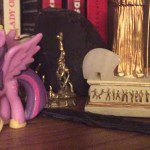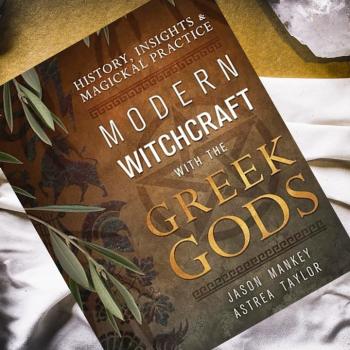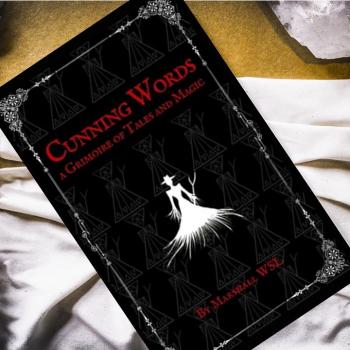[Author’s Note: My apologies for the ridiculously lengthy hiatus, and I hope to be writing about chronic health concerns and their relevance to practice and mysticism in an upcoming column.]
Start at the beginning.
No, before that.
Before that too.
Before there was a that.
Some Egyptian texts refer to the pre-creation as “Before there were two things.” What was there before there were two things? Nothing. Or, as the great sage Terry Pratchett put it in Lords and Ladies, “In the beginning there was nothing, which exploded.”
It was, however, a very specific nothing, and how we approach it in our theologies says a whole lot.
Starhawk in one of the early chapters of The Spiral Dance tells a myth: the Goddess, there, is described as “complete in herself”, beyond gender, as a singularity. This singularity remains undisturbed until there is an Other – the reflection seen in the mirror of space – and that reflection, drawn forth, freed, loved, introduces animation to the cosmos, the “completion” of the invisible cosmic now turned into something with motion, the reflection orbiting the originator, but being essentially other.
That’s the core thing: that self without reflection, that self without the other, is not so much one thing as nothing; there is nothing that can be known without knowing difference. This is why one does not interrogate the average fish about the properties of water, after all.
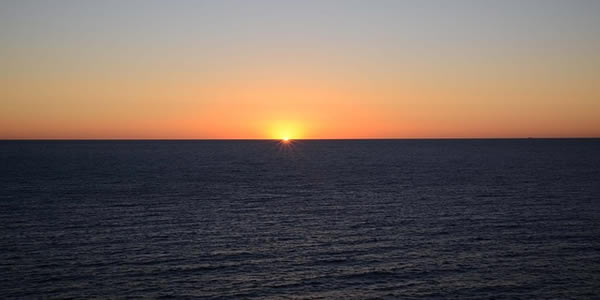
In Egyptian cosmology, the before-two-things is called the Nun. The Nun is visualised as a vast and entirely featureless ocean lying outside of reality. I cannot say it exists outside of reality, because reality is defined in this case as that which exists; the Nun is the font of existence and nonexistence both. No matter the size or scale of reality, the Nun is ineffably larger.
To this day, the fundamental truth that Aneris is the larger is apparent to all who compare the great number of things that do not exist with the comparatively small number of things that do exist.
– The Principia Discordia
This vast largeness is called “the father of the gods.” Rarely quite treated as a god itself, but as the potentiality from which the gods — and all of reality — emerge. From the nothingness that was the possibility of everything, a mound emerges; Something, upon that mound, creates Creation. Sometimes it is a flower that blooms, or a Power that speaks, or a falcon, or an arch of orgasm, but there, in the midst of maybe, an actual event happens, the first event, and after that comes everything.
(And here the Thelemites might all nod and murmur “zero equals two” among themselves, seeing the nothingness of potential becoming not one thing but necessarily two: perhaps creator and created, perhaps existence and reflection, but one thing alone is not different from the well of possibility.)
Water is sometimes called the “universal solvent:” more things dissolve in water than anything else. This makes it an excellent symbol for the Nun. It is the nature of unbeing that being can dissolve in it, can cease, can drift away. Some say that the goal (or at least a goal) of religion is to do the things that will delay this happening, or make it more difficult. That we must police the boundary between Being and Unbeing so that we can keep that which Is from fading away and ceasing.
But this boundary is not impermeable.
It can’t be.
You need to believe in things that aren’t true. How else can they become?
– Terry Pratchett, Hogfather
Creation emerged from the Nun in the beginning; but creation always emerges from the Nun. The thing did not exist, and then it did. Renewal flows from the Nun. Rebirth flows from the Nun. Restoration flows from the Nun. Change flows from the Nun.
In one way of approaching this myth, the birth of being came about through the actions of a set of Powers – it is difficult to call them ‘beings’ because their nature is of the Nun itself – which by inverting themselves and dying upon the threshold of possibility, they set and hold the boundary that allows for existence.
Nun and Naunet, the powers of formlessness, sacrificed to give us form.
Kek and Kauket, the powers of darkness, sacrificed to give us light.
Heh and Hauhet, the powers of infinity, sacrificed to give us bounds.
Amun and Amaunet, the powers of concealment, sacrificed to give us knowability.
These are the properties of the primordial, and their nature thus gives rise to the properties of the cosmos.

Patheos Pagan on Facebook.
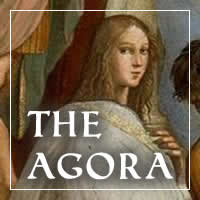
the Agora on Facebook
Hills of the Horizon is published monthly on the 29th here on the Agora. You can subscribe by RSS or via e-mail.
Please use the links to the right to keep on top of activities here on the Agora as well as across the entire Patheos Pagan channel.



